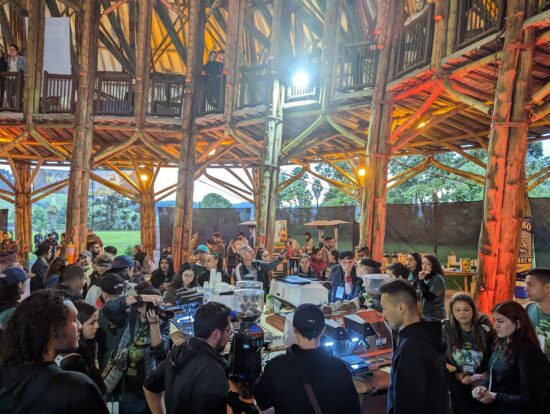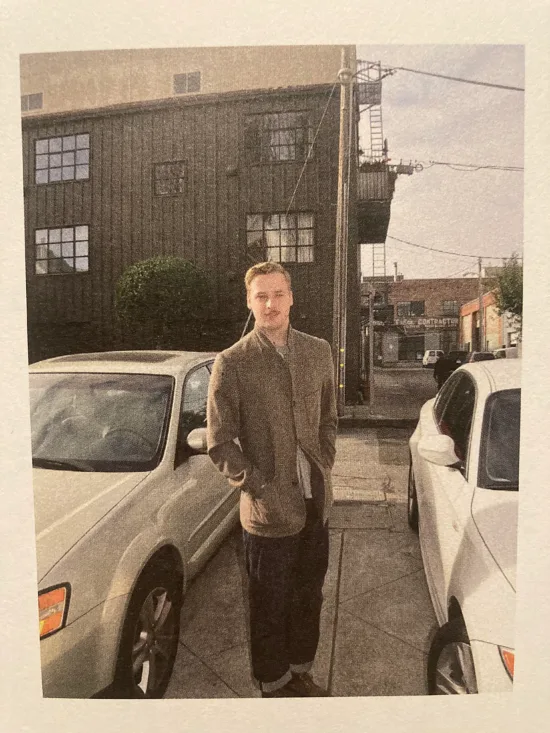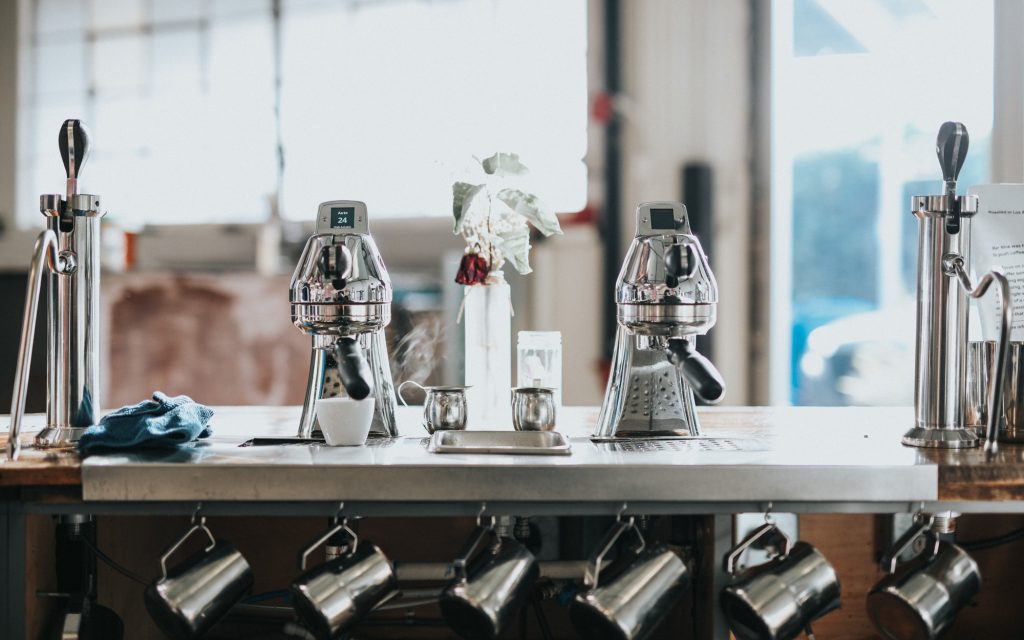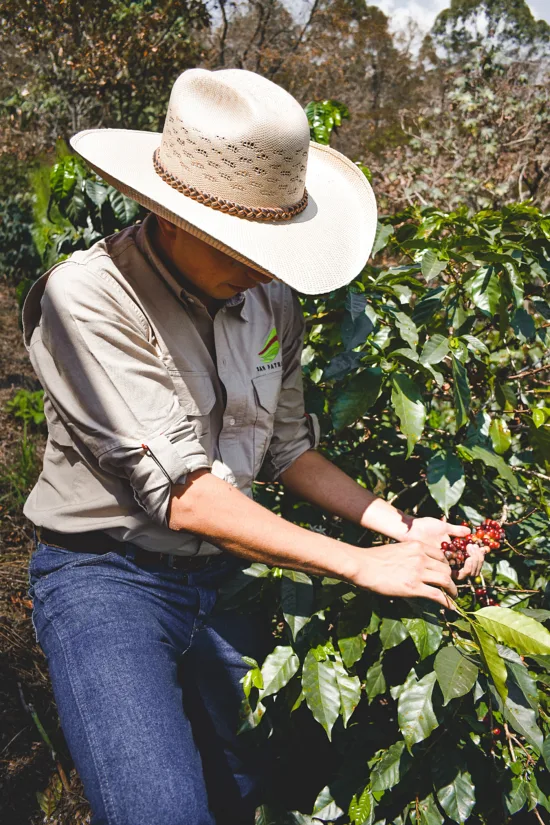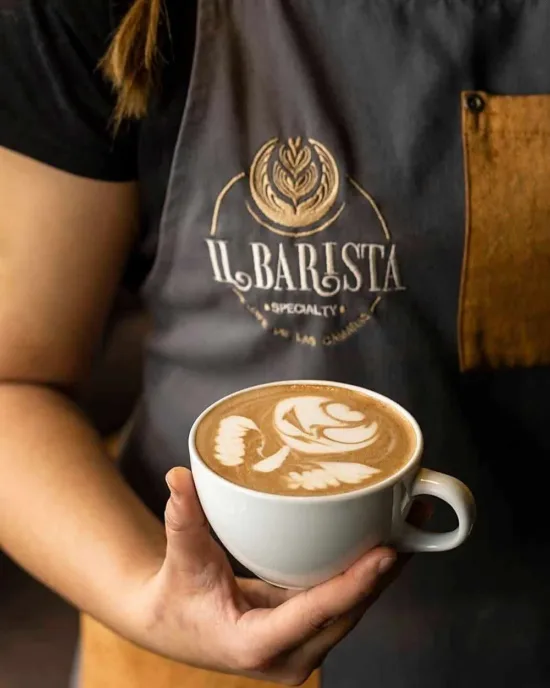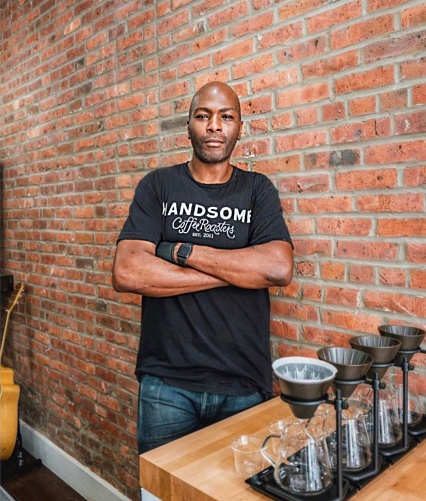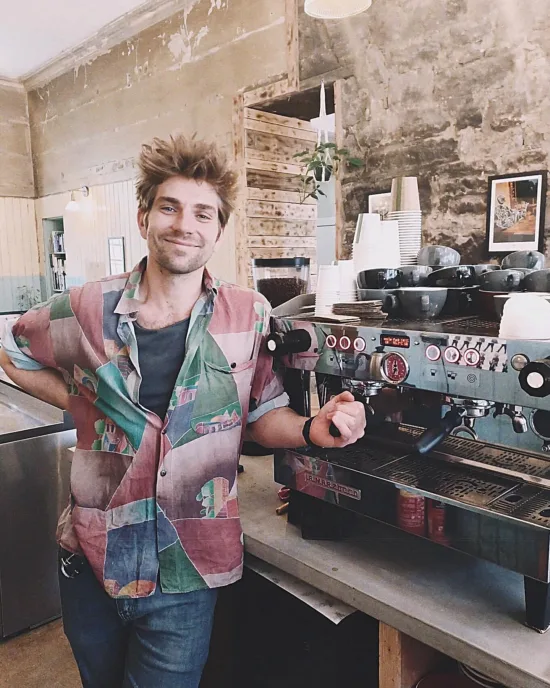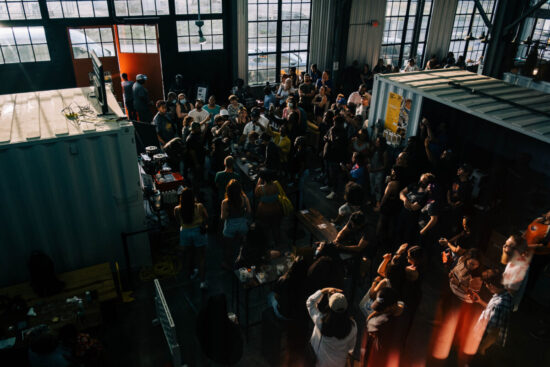This is the absolute fastest way to make French press iced coffee. Just forget about cold brew concentrate – with this Quick French Press Iced Coffee Recipe you can have your iced coffee ready in 5 – 6 minutes. Who doesn’t like the French press?! It’s...
Why it’s easier for wealthier producers to grow specialty coffee
Why it’s easier for wealthier producers to grow specialty coffee
Why it’s easier for wealthier producers to grow specialty coffee
Why it’s easier for wealthier producers to grow specialty coffee
Why it’s easier for wealthier producers to grow specialty coffee
Why it’s easier for wealthier producers to grow specialty coffee
Here’s How to Change Keurig 2.0 Water Filter Easily
Not sure how to change Keurig 2.0 water filter? Here are step-by-step instructions that will help you do it quickly and easily. Keurig water filter should be changed every 2 months or 60 tank refills. The water filter is located inside the water tank, on the valve at...
I Tested Keurig K Compact – Here’s Everything You Need To Know
The most affordable Keurig coffee maker is available exclusively at Walmart and comes at a sweet price of only $59.00. In this article, you’ll find out how good it really is, and also find additional information like how to clean it, or do you need a water...
The coffee rose for assessing Anaerobic coffee
I just came across this really neat tool to assess anaerobic coffees. I haven't used it for cupping yet. I'm not sure I will like it either because the idea of lowering the score of the coffee just because it tastes has some thyme flavors. At the same time I...
Three US Coffee Championship Events Are Heading To Rancho Cucamonga
This article is from the coffee website Sprudge at http://sprudge.com. This is the RSS feed version. The 2024 US Barista Championship, Brewers Cup, and Cup Tasters will take place March 15-17 at Klatch Coffee Roasters in Rancho Cucamonga, California.
The Origin Story of Turtle Island Coffee in Vancouver, B.C.
A new Indigenous-owned coffee company based in Vancouver, British Columbia, called Turtle Island Coffee has launched with the goal of exposing more people to high quality specialty coffee and Indigenous...
Get Ready for The Barista League’s 2024 Season
The Barista League has announced 12 competitions across four continents. BY J. MARIE CARLANBARISTA MAGAZINE ONLINE Photos courtesy of The Barista League When The Barista…
Get Ready for The Barista League’s 2024 Season
The Barista League has announced 12 competitions across four continents. BY J. MARIE CARLANBARISTA MAGAZINE ONLINE Photos courtesy of The Barista League When The Barista…
Get Ready for The Barista League’s 2024 Season
The Barista League has announced 12 competitions across four continents. BY J. MARIE CARLANBARISTA MAGAZINE ONLINE Photos courtesy of The Barista League When The Barista League announces new events, it’s worth paying attention! This year, the schedule will be...
Weekly Coffee News: EUDR and Africa + More Celebrity Coffee
Welcome to DCN’s Weekly Coffee News. Keep up with all the latest coffee industry stories and career opportunities by subscribing to DCN’s newsletter. Tell our editors about your news here. Report: Small-Scale Farmers in...
Do Higher Coffee Prices Mean More Money For Farmers? A Story From Sumatra Shows It’s Complicated
This article is from the coffee website Sprudge at http://sprudge.com. This is the RSS feed version. Since coffee costs more now than ever, do those coffee prices impact the amount of money earned by coffee farmers?
Coffee News Recap, 2 Feb: Applications open for Australia’s Richest Barista 2024, De’Longhi reports 4.6% revenue increase after La Marzocco move & other stories
Every Friday, Perfect Daily Grind rounds up the top coffee industry news from the previous week. Here are this week’s coffee news stories. The word of the week is: expansion. Mon, 29 Jan AeroPress launches limited-edition Clear Pink brewer. The coffee brewer is made...
Watch The 8 Best Coffee Videos Vying For Sprudgie Awards
This article is from the coffee website Sprudge at http://sprudge.com. This is the RSS feed version. The best coffee videos from 2023 featuring Cafe Imports, Aramse, Nguyen Coffee Supply, Wildly, Mirror Coffee Roasters, Alto Stories, Quek Shio, and Cafe Retiro.
Robusta is great and has untapped potential
I live in the US and my typical choice of coffee is lightly roasted Ethiopian pour overs. I generally love acidity and fruit flavors in my coffee. My experience with Robusta has often been poor. Very dark, roasty and maybe chocolatey. I participated in the Hoffman...
Design Details: Brewing Reinvented at ULA Café in Melbourne
Welcome to Design Details, an ongoing editorial feature in Daily Coffee News focused on individual examples of coffee shop architecture, interior design, packaging design or branding. If you are a coffee...
Robert Downey Jr.’s New “Happy Coffee” Is Really Depressing
This article is from the coffee website Sprudge at http://sprudge.com. This is the RSS feed version. Robert Downey Jr. and Craig Dubitsky team up for Happy Coffee.
Out Now: The February + March 2024 Issue of Barista Magazine!
In our new issue we feature Lisa Lawson from Glasgow, Scotland, take a look at the newest grinders, explore spring drink inspiration, see how more women are getting involved in coffee tech, and much more! BY SARAH ALLENBARISTA MAGAZINE We’re stoked to announce the...
The coffee industry’s biggest competition: The story of the World Barista Championship
Every year, the global coffee industry gears up for one of its most exciting and groundbreaking competitions: the World Barista Championship. For more than two decades, the WBC has been one of the biggest catalysts for change and innovation in specialty coffee, and...
The 2023 Specialty Coffee Transaction Guide Has Landed
The 2023 edition of the Specialty Coffee Transaction Guide (SCTG) guide went live today, providing actors throughout the coffee chain a data-driven tool for green coffee price discovery. The full...
Espro great until I needed replacement filter ☹️
I've had an Espro P7 for nearly four years after seeing glowing praise on this sub (to which I later contributed). Before I bought the P7 I looked at the replacement parts available and they seemed like a solid company in that they sold e.g. replacement filters...
New Bill Requires More Kona In Your Kona Coffee
This article is from the coffee website Sprudge at http://sprudge.com. This is the RSS feed version. Currently a coffee only need to be 10% Kona to be labeled as such.
What’s the best and worst part about owning and running a coffee shop?
I'm not interested in getting into it myself, as I have no experience in the service industry, no real appetite for risk and no desire to run a business in general. But sometimes I think about it and I wonder what's the most enjoyable thing about it and...
minimum dose size?
I use the Hario switch to brew my coffee and am trying to reduce my caffeine consumption. Hence I would like to brew smaller cups of coffee. I am currently using 10g of coffee with 160g of water. (1:16 Ratio) I am wondering if there is a minimum amount of coffee...
[CAFE OWNERS] Background before starting a shop?
I’ve worked in coffee for 6 yrs as a barista and shift supervisor and have passion for it. I’ve decided that I want to open my own place in the future and so I’ve been doing the research to make a business plan. Lately, however, I’ve begun to realize just how many...
Why it’s easier for wealthier producers to grow specialty coffee
It takes money – and sometimes a lot – to grow specialty coffee. Producers not only need to continuously maintain and improve quality and yields, but they also have to invest back into their farms. Whether it’s replacing equipment and machinery or planting more resilient varieties, producers need to turn a profit to operate their farms as successfully as possible.
For many of the 12.5 million smallholder coffee farming families in the world, this can be challenging to say the least. Despite being responsible for up to 80% of the world’s coffee supply, it’s estimated that up to 80% of these families live below the poverty line. Resultantly, investing back into their farms to grow higher-quality coffee can be impossible, which puts them at a clear disadvantage.
So it’s then a fair statement to make that it’s much easier for more economically advantaged producers to grow specialty coffee. But what impact does this have on the industry and how can we improve market access for smallholders?
To explore this topic further, I spoke to Ted Fischer, author of Making Better Coffee, and Chad Trewick, head of green coffee at Azahar Coffee Company.
You may also like our article on why more producers don’t market their coffee.


Understanding wealth disparity in coffee production
Coffee farms are businesses, and therefore need to make money to operate. But given that there is no strict market regulation for the price of specialty coffee, the amount paid to different producers can vary significantly.
Take, for instance, the C price, which is the trading price of commodity-grade arabica on the Intercontinental Exchange – a major commodities exchange based in New York City. At the most basic level, the C price is determined by supply and demand, so it is in constant fluctuation. As of late January 2024, the C price sits just under US $2/lb.
The price of specialty coffee is linked to the C market, but usually with an additional premium – which can range vastly.
One of the most recent (and extreme) examples is the 2023 Best of Panama auction, when a 96.5 point washed Gesha from Carmen Estates received a staggering bid of US $4,500/lb ($10,005/kg).
This is quite an exceptional case, of course, and shouldn’t be compared to the C price in any real terms. Considering, however, that the International Trade Centre’s Coffee Exporter’s Guide estimates most producers retain around 10% of the retail coffee price, this equates to about US $0.40 per cup – if we assume most coffee shops charge around US $4 per cup of filter coffee.
For many, it’s difficult to reconcile the fact that while some farmers received thousands of dollars at auctions for small amounts of coffee, many others live below the poverty line.
Can we easily explain these inequities?
Ted Fischer is a professor of Anthropology at Vanderbilt University in Tennessee. His book, Making Better Coffee, focuses largely on how indigenous Maya coffee farmers play an integral role in Guatemalan coffee production.
While he acknowledges the topic is incredibly complex and hard to fully unpack, he tells me that heritage and succession play a big role.
“In countries like Guatemala and other parts of Latin America, the wealthier farms tend to be those who have been operating for a much longer time,” he says.
The disparity also links back to colonial trade models. During the 1700s and 1800s, European colonial powers established the mass production and global trade of coffee, and retained the vast majority of wealth for themselves – while paying very little to no wages to farm workers.
Although colonial structures and dynamics are deeply ingrained in the coffee sector, the way coffee is traded has thankfully changed for the better over the last few decades, with a much bigger focus on direct trade and paying “fairer” prices.
However, when respective producing countries gained their independence and European colonial powers abandoned coffee production, it inherently meant there was a lot of inequity and disparity between different farms.
The reasons for this can vary widely – from location of the farm (i.e. higher altitudes often result in higher-quality coffee) to access to capital to knowledge of how the market operates.
“If producers have enough resources to be innovative and entrepreneurial, and have the capacity to experiment with different varieties and processing methods, then they can invest time and money into specialty coffee production,” Ted says.
“Smallholders can certainly produce great coffees,” he adds. “But more often than not, well-established, medium-sized farms have the resources to tap into these new markets.”


How does the wealth gap form?
Wealth inequality is a complex and intersectional issue that affects many societies and industries. One of the main contributing factors is that having money in the first place simply makes it easier to accumulate even more wealth, as well as improving access to investment opportunities, capital, industry networks, and education.
Moreover, being more financially secure means producers can often afford to try out new farming practices or plant new varieties – and bear the economic burden if their efforts aren’t successful.
In the specialty coffee industry in particular, “success” for producers is mostly determined by constantly evolving quality standards – which are largely established by consumer markets in the first place. To keep up, producers need to continuously innovate, operate efficiently, and, most importantly, gain access to different markets.
“To achieve all of this, you need resources beyond just making ends meet day-to-day, which can be a real struggle for some small-scale producers,” Ted says.
What’s more, accessing financial support and capital can be a challenge for smallholders, who are more likely to lack the necessary collateral to secure loans from banks. And if they are able to receive loans, they can often come with higher interest rates – which can worsen their financial situation in the long run.
Chad Trewick oversees Azahar Coffee Company’s green coffee sourcing operations – a company which focuses on paying Colombian producers stable prices for their coffee.
“Producers with fewer resources face strategic disadvantages in many ways,” he tells me. “If they have to cut back on important inputs for their coffee production, they will see lower yields, which keeps them stuck in a cycle of poverty.
“Without access to ongoing training and support for adopting new and innovative farming practices, they miss out on opportunities to improve coffee quality and farm efficiency,” he adds.
Building better networks
As well as focusing on quality, the specialty coffee industry places a lot of value and importance on building personal connections.
Although it’s largely the responsibility of roasters to share information about coffee production with consumers, there’s also an expectation for producers to establish long-term relationships with roasters, too. Additionally, attending industry events and hosting farm visits can be hugely beneficial for producers, but only a small number will have the financial resources and facilities to do so.
“Gaining access to different target markets and understanding demand and consumer preferences by attending events and expos puts some producers at a significant disadvantage,” Chad says. “The knowledge gained from these experiences can lead to greater success in the industry.”


Why improving market access for smallholders is so important
Specialty coffee prides itself on championing transparency, traceability, and sustainability. A big part of this is establishing genuine connections with producers and farms of all sizes.
“The current market structure, however, makes it challenging for those who grow smaller quantities of coffee to engage with specialty roasters,” Ted explains.
One of many approaches to improve market access is to minimise the number of intermediaries in the supply chain. These are people who carry out a number of tasks in producing countries, such as:
- Transporting coffee (whether as cherry or parchment)
- Milling
- Exporting green coffee
Intermediaries do play an important role in the industry – and can even benefit producers in many ways. Their presence in the supply chain, however, can often mean that producers end up receiving a smaller percentage of the final price for their coffee.
In theory, by streamlining the supply chain, smallholders can add more value to their coffee and potentially develop closer relationships with traders and roasters. But if producers don’t have the resources and infrastructure to mill and export their coffee in the first place then working with intermediaries is a necessity.
Alternative trade models
Co-operatives are another viable solution. Essentially, a coffee co-operative is a group of producers who join together to collectively improve their access to a number of resources. These can include fertilisers, farming tools, seeds, and loans.
Moreover, producers can also take part in formal training programmes and can leverage better marketing and business opportunities. In theory, this can help them to receive higher prices for their coffee, or improve stability by committing to selling a larger volume of coffee on a repeat basis.
Although this model has received some criticism in recent years (including the potential to reduce coffee quality), when well-managed, co-operatives offer a number of benefits to members – especially smallholders who own smaller parcels of land.


It’s a harsh reality that more economically advantaged producers inherently have better access to resources, capital, and new markets – and therefore can more easily grow specialty coffee.
But that doesn’t mean the industry shouldn’t do more to support smallholders. By bridging the wealth gap in coffee production, we can take steps towards a truly sustainable supply chain.
Enjoyed this? Then read our article on whether consumers actually want to be more connected to producers.
Perfect Daily Grind
Want to read more articles like this? Sign up for our newsletter!
The post Why it’s easier for wealthier producers to grow specialty coffee appeared first on Perfect Daily Grind.






